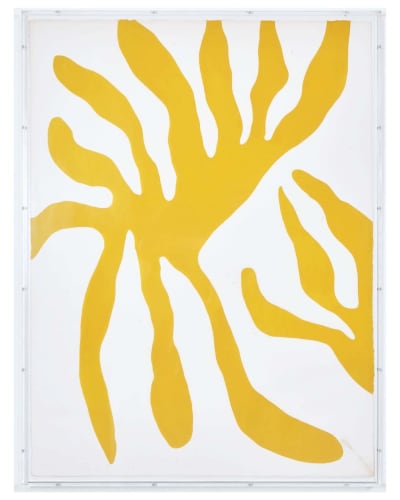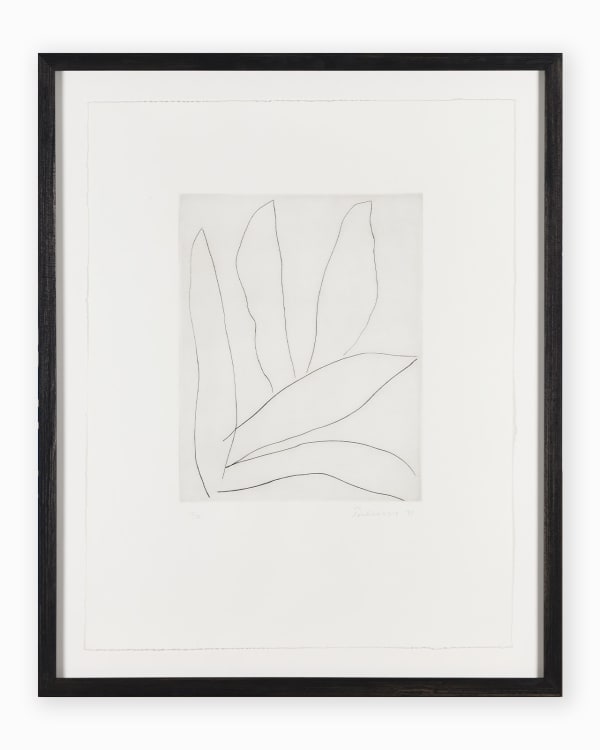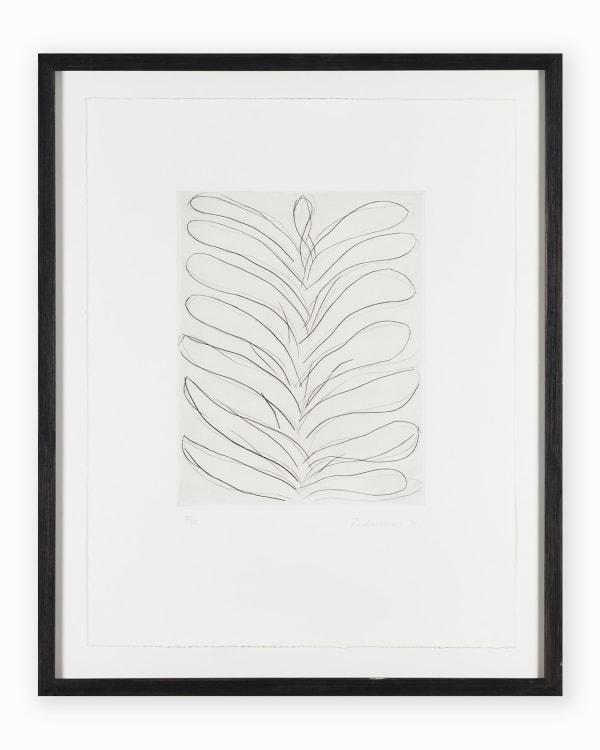William Turnbull
‘I was very much concerned that a sculpture was an object and a painting was an object. The paintings I made were objects, they weren’t illusions. They didn’t refer to something else, they only refer to themselves, and so they were actually in the same area, but they were made with different stuff’
- The Artist, in William Turnbull: Beyond Time, a film by Alex Turnbull and Peter Stern, 2013.
William Turnbull (1922 - 2012) was best known for his sculptures of elemental form. Born in Scotland, he worked briefly as an illustrator before fighting in World War II. At the Slade School of Fine Art, 1946 he met lifelong friend Eduardo Paolozzi. In 1952, Turnbull was included in the British Pavilion’s sculpture survey at the Venice Biennale. He joined the Independent Group of artists in the 1950s and participated in the 1956 exhibition “This is Tomorrow” at the Whitechapel Gallery, which helped catalyse the Pop art movement.
On paper Turnbull would typically explore the reduction of figures and organisms to basic forms, and the representation of movement and direction through elemental means, speaks of a timeless visual language. His sculpture was inspired by ancient artefacts from African, Oceanic realms to aisian influences and contemporary culture.
Represented in major collections worldwide, Turnbull had one-man shows during his lifetime that included a Tate retrospective in 1973 and a show at Serpentine Galleries in 1995. The towering bronze and rosewood sculpture Lotus Totem (1962) fetched $1,078,232 at auction in 2015.
-
 William TurnbullYellow Leaf Form , 1967Lithograph on wove£ 7,600.00
William TurnbullYellow Leaf Form , 1967Lithograph on wove£ 7,600.00
Signed, dated and numbered 50/75 in pencil
H83 x W63 cm (framed dimensions) -
 William TurnbullVormen Van De Kleur, 19674 of 4£ 720.00
William TurnbullVormen Van De Kleur, 19674 of 4£ 720.00
Silkscreen on light wove card
H33 x W33 cm (framed dimensions) -
 William Turnbull"Double Red" serigraphPrinted in Germany in 1967 for the Formen der Farbe portfolio£ 720.00
William Turnbull"Double Red" serigraphPrinted in Germany in 1967 for the Formen der Farbe portfolio£ 720.00
Silkscreen on light wove card -
 William TurnbullFugue1971£ 23,160.00 inc. vat
William TurnbullFugue1971£ 23,160.00 inc. vat
Set of 9 screen prints in colours on wove paper
Ed. of 75
H65.5 x W86.5 cm (each framed)
H209 x W272 cm approx. (all 9 together) -
 William TurnbullLeaf 31971£ 2,520.00 inc. vat
William TurnbullLeaf 31971£ 2,520.00 inc. vat
Etching on wove paper Ed. 6/30
H73 x W58 cm (framed dimensions) -
 William TurnbullLeaf 51971£ 3,960.00 inc. vat
William TurnbullLeaf 51971£ 3,960.00 inc. vat
Etching on wove paper Ed.6/30
H73 x W58 cm (framed dimensions) -
 William TurnbullLeaf 61971£ 2,520.00 inc. vat
William TurnbullLeaf 61971£ 2,520.00 inc. vat
Etching on wove paper Ed.5/25
H73 x W58 cm (framed dimensions)







